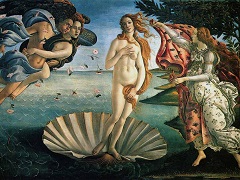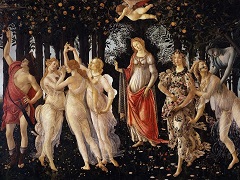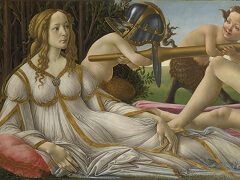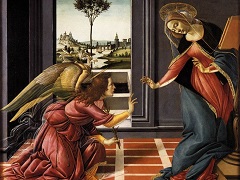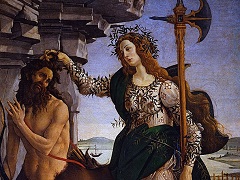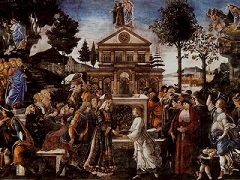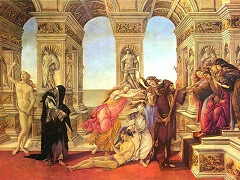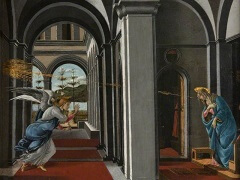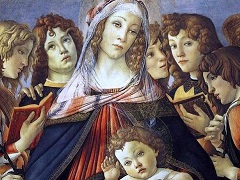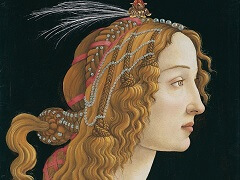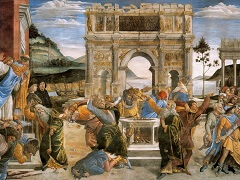Lamentation over the Dead Christ, 1492 by Sandro Botticelli
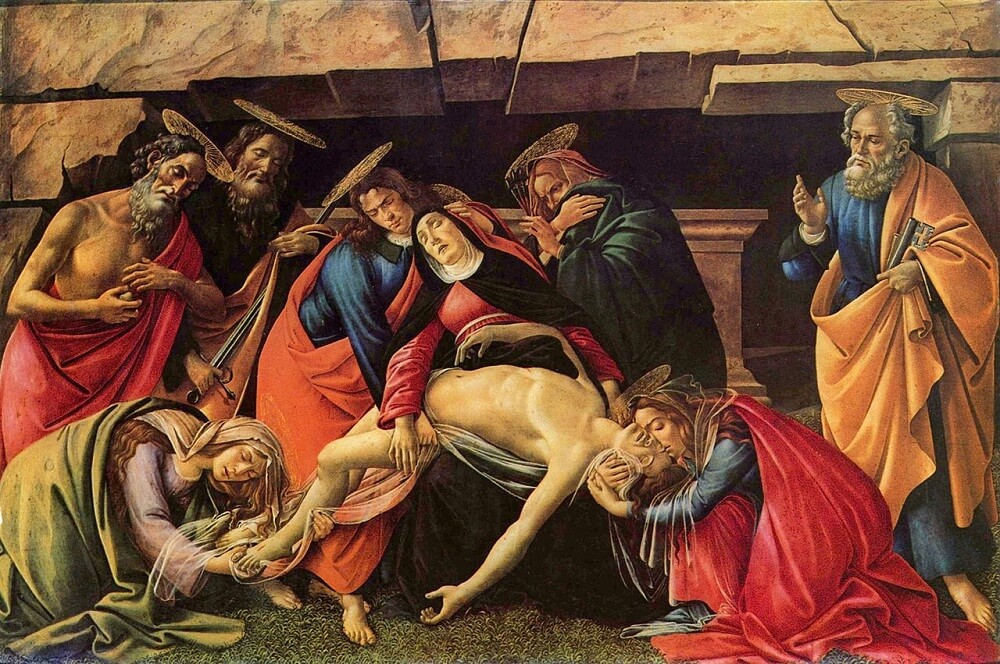
Lamentation over the Dead Christ convey the intense grief of the mourners in a particularly vivid way. In order to heighten the emotional impact on the observer, Botticelli placed the figures directly adjacent to the bottom edge of the picture, abandoning any effect of distance. The gaze of the observer, who is thus invited to participate in the picture, falls first upon the body of the dead Christ, which, together with the white linen cloth, stands out wanly against the black robe of the Virgin. Botticelli has conveyed the idea of the close relationship between the apostle John and the Virgin in a particularly vivid manner. In the same way that both stood as one under the cross until Christ's death, so they appear here, fused together in a similar posture with the one lying against the other to form a unity.
The totality of the painting's composition conveys the fervent religious zeal of Savonarola's followers; it is hardly surprising to learn that two members of the family of Donato Cioni, who had commissioned the painting, were in fact piagnoni, or "weepers", as Savonarola's comrades-inarms called themselves.

